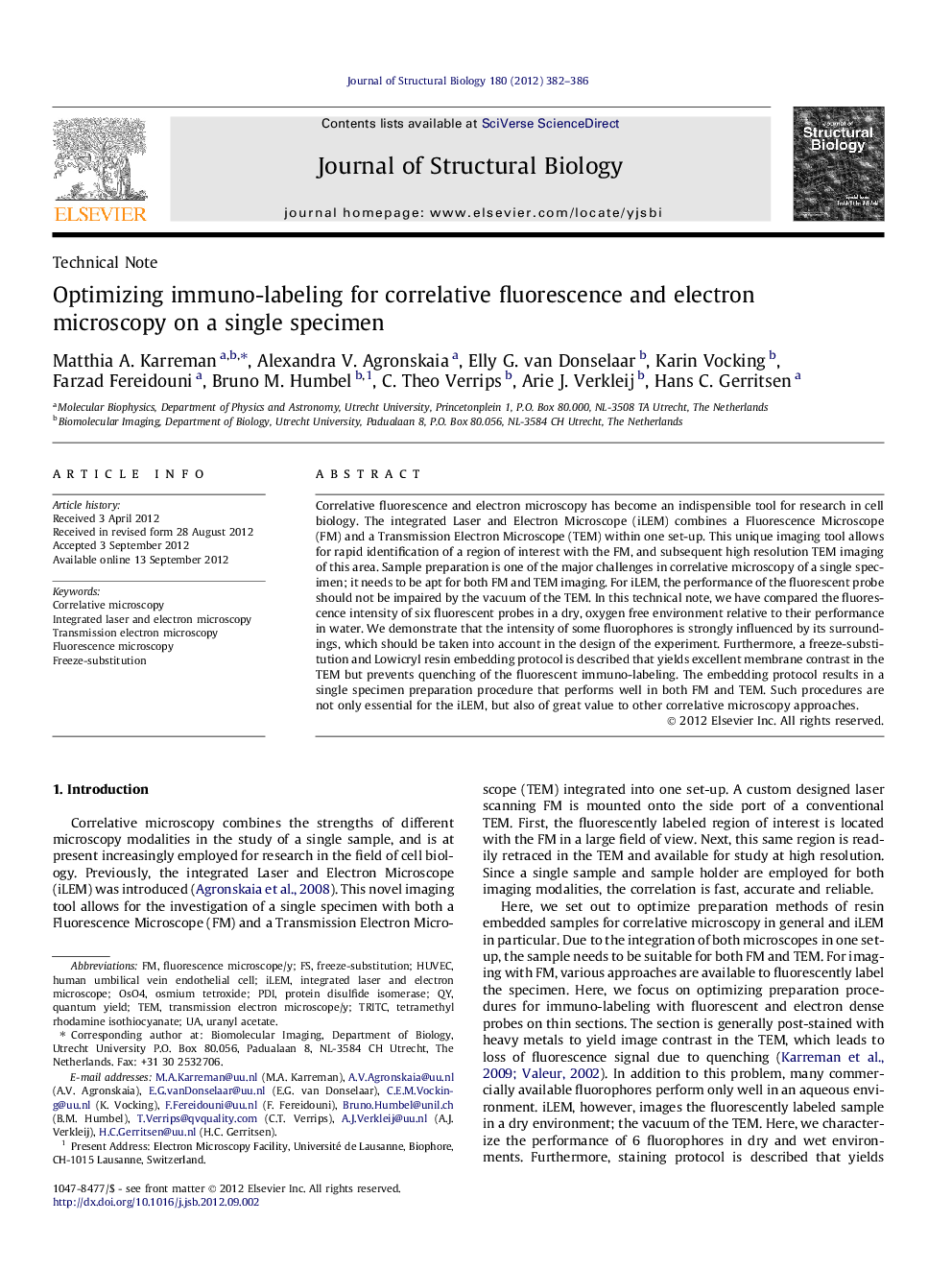| Article ID | Journal | Published Year | Pages | File Type |
|---|---|---|---|---|
| 2828636 | Journal of Structural Biology | 2012 | 5 Pages |
Correlative fluorescence and electron microscopy has become an indispensible tool for research in cell biology. The integrated Laser and Electron Microscope (iLEM) combines a Fluorescence Microscope (FM) and a Transmission Electron Microscope (TEM) within one set-up. This unique imaging tool allows for rapid identification of a region of interest with the FM, and subsequent high resolution TEM imaging of this area. Sample preparation is one of the major challenges in correlative microscopy of a single specimen; it needs to be apt for both FM and TEM imaging. For iLEM, the performance of the fluorescent probe should not be impaired by the vacuum of the TEM. In this technical note, we have compared the fluorescence intensity of six fluorescent probes in a dry, oxygen free environment relative to their performance in water. We demonstrate that the intensity of some fluorophores is strongly influenced by its surroundings, which should be taken into account in the design of the experiment. Furthermore, a freeze-substitution and Lowicryl resin embedding protocol is described that yields excellent membrane contrast in the TEM but prevents quenching of the fluorescent immuno-labeling. The embedding protocol results in a single specimen preparation procedure that performs well in both FM and TEM. Such procedures are not only essential for the iLEM, but also of great value to other correlative microscopy approaches.
